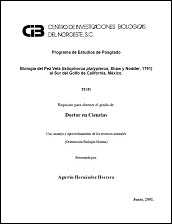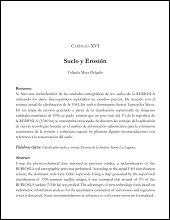Goat milk fatty acid composition in the Peninsula of Baja California, Mexico
Composición de la grasa láctea de cabras en la Península de Baja California, México
Autor
EDUARDO ALBERTO TOYES VARGAS
MIGUEL VICTOR CORDOBA MATSON
JOSE LUIS ESPINOZA VILLAVICENCIO
ALEJANDRO PALACIOS ESPINOSA
BERNARDO MURILLO AMADOR
Metadatos
Mostrar el registro completo del ítemResumen
"Objective. The objective of the study was to determine the composition of fatty acids in milk of Creole goats in an extensive production system in an arid region of the peninsula of Baja California and compare it to two seasons of the year (rainy and dry). Materials and methods. Sampling was conducted during the dry season (June) and after the rainy season (December) in the municipality of Comondú in Baja California Sur. The extensive production system used involved releasing goats to roam freely in the rangeland to graze for food, and no additional food or supplements were provided. Results. The most abundant fatty acids were saturated fatty acids (66.3 and 70.9% in the rainy and dry reasons, respectively). The most abundant of these were palmitic, myristic, and stearic acid in both seasons. Monounsaturated fatty acids (15-20%) were the most numerous in terms of isomers, but mostly in low concentrations. The largest average constituent of polyunsaturated fatty acids (5-6%) was linoleic acid (3%) and alpha-linolenic acid (1.2%) in both seasons. Branched, fatty acid concentrations were highly variable; the only stable constituents were C15:0 iso (1.5%) and C16:0 anti-iso, with 0.7% of total fatty acids. Conclusions. The seasons in this extensive production system significantly effected the composition of most monounsaturated and branched fatty acids in goat milk; however, saturated and polyunsaturated showed only a few compositional changes in abundance of fatty acids. Moreover, season effects were not significant on the total fatty acid content, except for branched fatty acids and omega-3." "Objetivo. El objetivo del presente estudio fue determinar en un sistema de producción extensivo la composición de la grasa en leche de cabras Criollas en una zona árida de la península de Baja California en dos épocas del año (lluvias y sequía). Materiales y métodos. Los muestreos se realizaron durante la temporada de sequía (junio) y después de las lluvias (diciembre) en el municipio de Comondú, Baja California Sur. El sistema de producción extensivo se desarrolla en condiciones de pastoreo en donde las cabras andan libremente buscando alimento, suplementos no fueron proporcionados. Resultados. En las dos épocas año mostraron proporciones muy abundantes de los ácidos grasos saturados de 66.3 y 70.9% durante lluvias y sequía, respectivamente. Los más representativos de estos fueron el ácido palmítico, mirístico y esteárico. Los ácidos grasos monoinsaturados (15-20%) fueron los más numerosos en cuanto a isómeros, pero en su mayoría en muy bajas concentraciones. Los ácidos grasos ramificados estuvieron en concentraciones muy variables, presentándose de manera estable el C15:0 iso (1.5%) y C16:0 ante-iso con 0.7% del total de ácidos grasos. Conclusión. Se concluye que las épocas del año en el sistema de producción extensivo mostraron efecto significativo en la composición de la mayoría de los ácidos grasos monoinsaturados y ramificados en la leche de cabra; sin embargo, los ácidos grasos saturados y poliinsaturados mostraron pocos cambios en abundancia y composición de ácidos grasos. Además, los efectos de épocas año no fueron significativos en el contenido de ácidos grasos totales, con excepción de ácidos grasos ramificados y omega-3."
Colecciones
Ítems relacionados
Mostrando ítems relacionados por Título, autor o materia.
-
PROMOCIÓN DEL PERIFITON PARA EL CULTIVO DE CAMARÓN BLANCO: HACIA UNA ACUICULTURA ECOLÓGICA
DOMENICO VOLTOLINA LOBINA; JUAN MANUEL AUDELO NARANJO; MARIA DEL ROSARIO PACHECO MARGES -
Suelo y Erosión
YOLANDA LOURDES MAYA DELGADO


